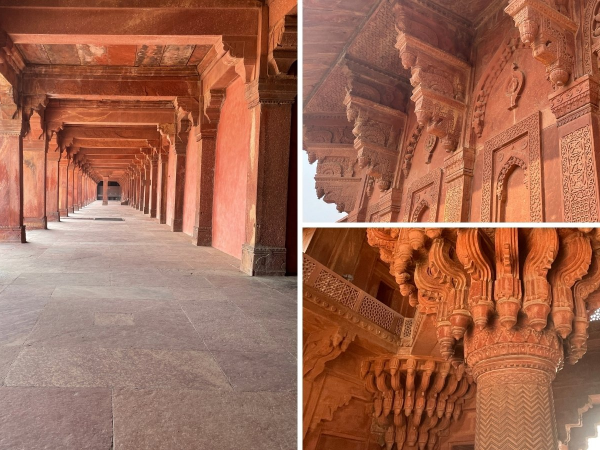The Geometry of Empire: Exploring the Mughal Design Language in Fatehpur Sikri, Part 2
The Geometry of Empire is a five-part journey through the world of Mughal architecture from Delhi to Agra and Fatehpur Sikri. Each course explores a different building type within this remarkable era mausoleums, forts, palaces, and dargahs (shrines) revealing how geometry shaped every aspect of their design.
Students will learn how the Mughals used geometry not only as a decorative tool but also as a way of expressing order, harmony, and proportion. Through analytical drawings and historical study, the series connects art, mathematics, and built heritage.
By the end of the series, students will have developed a deep understanding of how geometry formed the foundation of Mughal design, how it was translated into stone and craft, and how it continues to influence the visual language of India today.
In this four-week course, we explore the fort area of Fatehpur Sikri, including Birbal’s Palace, the Panch Mahal, the Diwan-e-Khas, and other courtly buildings that formed the royal precinct. These structures reveal how geometry and ornament were used to express authority, balance, and refinement in Mughal architecture.
This sense of harmony reflects the broader philosophy of Akbar’s reign, which celebrated cultural diversity and the coming together of ideas from different faiths and traditions. This philosophy is seen in the carvings, architectural forms, and artistic ex
Students will study the wide range of patterns found in carved sandstone panels, columns, and ceilings. Working primarily with 4-, 6-, 10-, and 12-fold grids, we will trace how geometry unified the fort’s architectural language. The course will also introduce symmetrical and chiral pattern systems. Through drawing and analysis, students will gain insight into how geometry functioned as both structure and storytelling within the imperial setting.
Booking Options
The Geometry of Empire is a five-part journey through the world of Mughal architecture from Delhi to Agra and Fatehpur Sikri. Each course explores a different building type within this remarkable era mausoleums, forts, palaces, and dargahs (shrines) revealing how geometry shaped every aspect of their design.
Students will learn how the Mughals used geometry not only as a decorative tool but also as a way of expressing order, harmony, and proportion. Through analytical drawings and historical study, the series connects art, mathematics, and built heritage.
By the end of the series, students will have developed a deep understanding of how geometry formed the foundation of Mughal design, how it was translated into stone and craft, and how it continues to influence the visual language of India today.
In this four-week course, we explore the fort area of Fatehpur Sikri, including Birbal’s Palace, the Panch Mahal, the Diwan-e-Khas, and other courtly buildings that formed the royal precinct. These structures reveal how geometry and ornament were used to express authority, balance, and refinement in Mughal architecture.
This sense of harmony reflects the broader philosophy of Akbar’s reign, which celebrated cultural diversity and the coming together of ideas from different faiths and traditions. This philosophy is seen in the carvings, architectural forms, and artistic ex
Students will study the wide range of patterns found in carved sandstone panels, columns, and ceilings. Working primarily with 4-, 6-, 10-, and 12-fold grids, we will trace how geometry unified the fort’s architectural language. The course will also introduce symmetrical and chiral pattern systems. Through drawing and analysis, students will gain insight into how geometry functioned as both structure and storytelling within the imperial setting.


